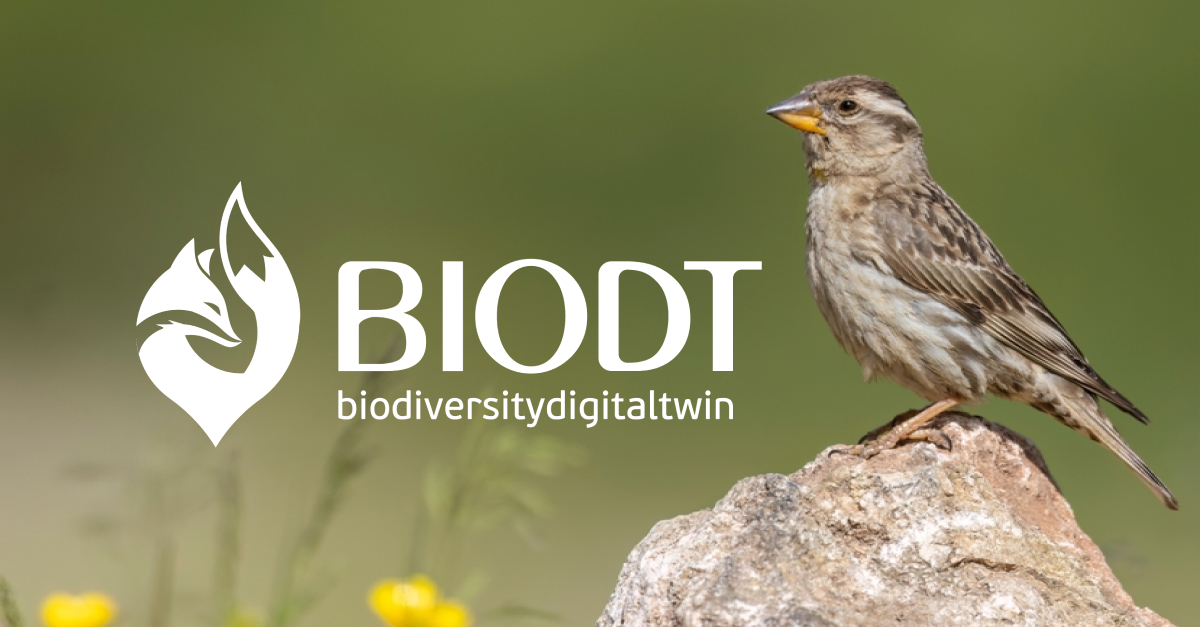
One of the most pertinent issues facing society today is climate change and nature’s degradation. In an effort to preserve and protect nature’s biodiversity, the development of digital twins represents the pinnacle of scientific collaboration.
A consortium of 22 partners, led by CSC-IT Center for Science, home of EuroHPC Lumi Supercomputer is developing Biodiversity Digital Twins (BioDT) as a result of the European Commission’s initiative. BioDT brings together experts in biodiversity, ecological modelling, artificial intelligence, and state-of-the-art computing, in order to enhance the accuracy and predictive performance of biodiversity models.
The Biodiversity Digital Twin’s latest prototypes
In their latest press release, the BioDT team highlighted the most recent developments in their cross-disciplinary efforts to map out environmental change upon species and ecosystems. The project’s data mapping contributes to several UN Sustainable Development Goals, including Zero Hunger, Good Health and Well-Being, Climate Action , and Life on Land.
In the current development, BioDT has ten prototype digital twins – each addressing various aspects of nature’s ecosystem. From invasive species to grasslands, the prototypes are divided into four focus groups:
Species Response to Environmental Change
Through incorporation of temporal dynamics, this digital twin encompasses extensive geographic data within a single modelling framework; an active tracker of ecosystem’s changes and potential disturbances. The prototypes allow researchers to track and monitor all aspects of biodiversity, from changes in birds’ migration patterns or disrupted breeding cycles, to the disappearance of certain grassland types.
Genetically Detected Biodiversity
What if we could track down wild crops with the same genetic composition as that of highly-consumed crops? Or if we could track and monitor changes of habitats of less-researched species like legumes and fungi? There are several digital twins currently being developed in order to address such questions, combining innovation and super computation to visualise and monitor patterns in global, dynamic data sources.
Dynamics of Species of Policy Concern
The high-intensity of urban development has influenced the changes in territories and habitus of various species, and consequentially, promulgated the rise of invasive species across Europe. The prototype concerning the prediction of potential invasions under current climate scenarios also represents one of the digital twins currently in development.
Influence of Species Interaction
The successful facilitation of digital twin prototype can have a profound impact on how we understand, mitigate, and even prevent biodiversity degradation. For instance, the pDT designed to assess and monitor the wide-spread loss of bee colonies, can help bee-keepers circumvent and reduce the effects of parasites or diseases. The model combines land-cover maps and daily weather data to provide detailed simulations of colony health and productivity. Currently being tested across Germany, this model can be applied at local, regional, and national scales.
Collaborative research for environmental protection: RIO Journal Collection
The digital mapping generated a diverse depository of collected data. In order to preserve and utilise the project findings, the BioDT team produced 10 scientific papers, compiled in the “Building Biodiversity Digital Twins” issue of the open-science scholarly journal Research Ideas and Outcomes (RIO).
RIO enables the BioDT team to showcase and exchange the latest data discoveries through the peer-review format. Thus, the datasets are already available to researchers, students, agricultural producers and managers as well as environmental enthusiasts. With easy discoverability and reusability of produced data sets, the BioDT team ensures a more efficient use of the prototype models.
The role of Trust-IT Services in the facilitation of digital twin prototyping
In the facilitation of BioDT, Trust-IT plays an essential part in the updates and implements the communication, dissemination & exploitation strategy for the project, carrying out the related activities, including all digital, web and social media presence. Leading Work Package 2 (WP2), Trust-IT also takes lead in organising and facilitating workshops and events with all key stakeholders of the project, in order to create impact and build a BioDT community, promoting biodiversity and innovation in digital modelling.
Trust-IT’s contributions bring together the latest advances in user experience (UX) design, with user-friendly content, reflecting the accessibility and interactivity of digital twin prototypes. We ensure that the project’s digital presence is not simply informative, but a central hub for community of researchers, climate enthusiasts, and other relevant stakeholders who work towards a sustainable future. Alongside the production of research and output journals, Trust-IT will also release a policy brief in the upcoming months, highlighting the challenges and opportunities of digital twin use.
We invite all stakeholders to traverse into the use of digital twin prototypes and explore the BioDT website for the latest news on BioDT team’s progress.
